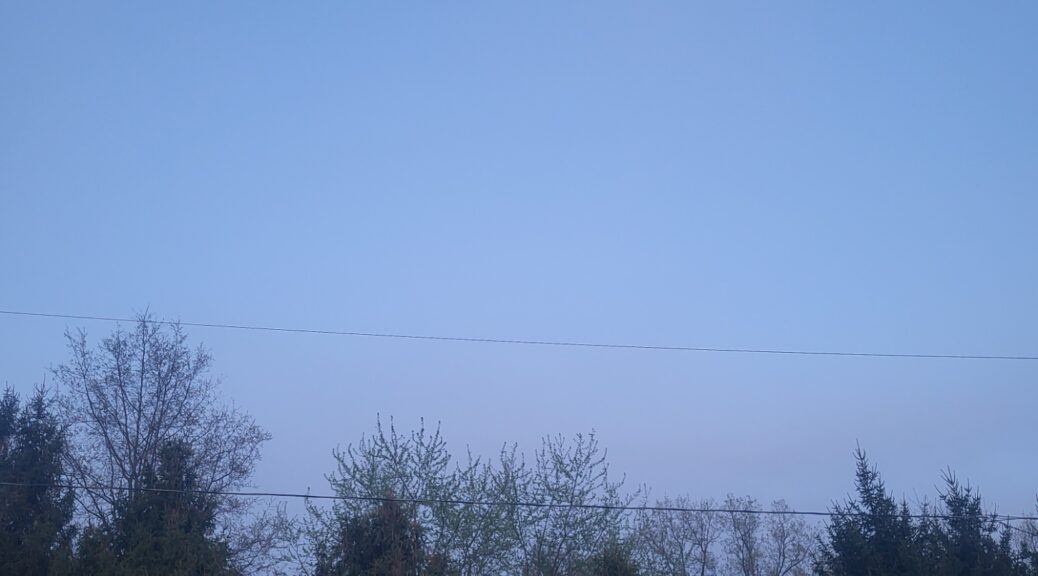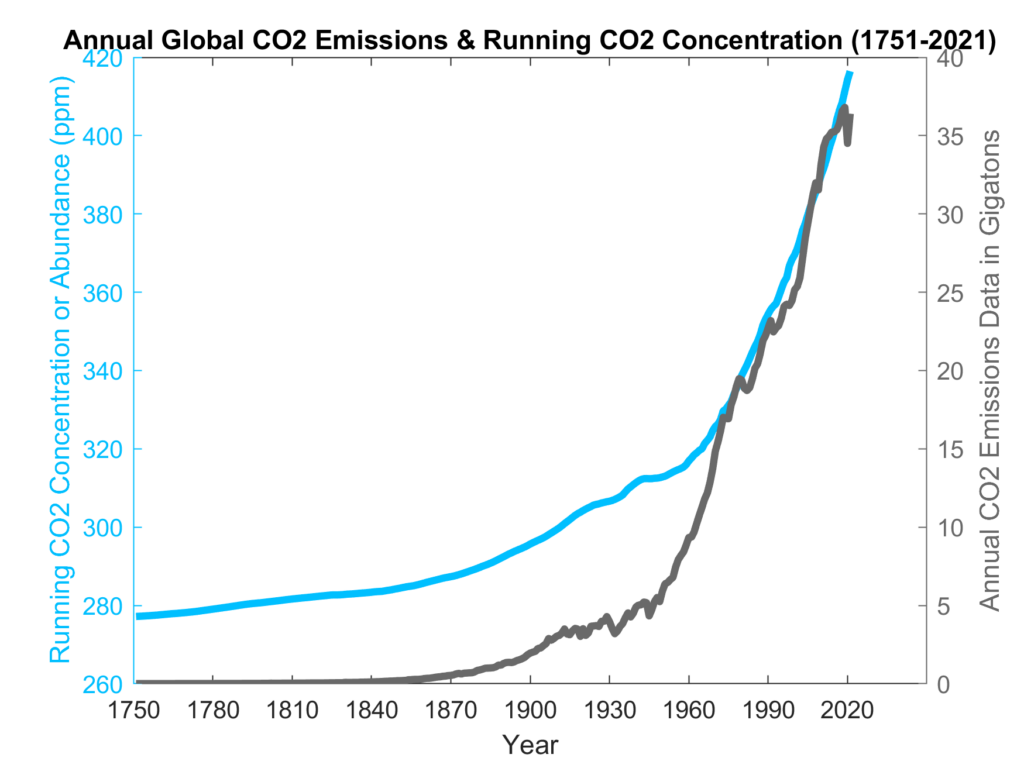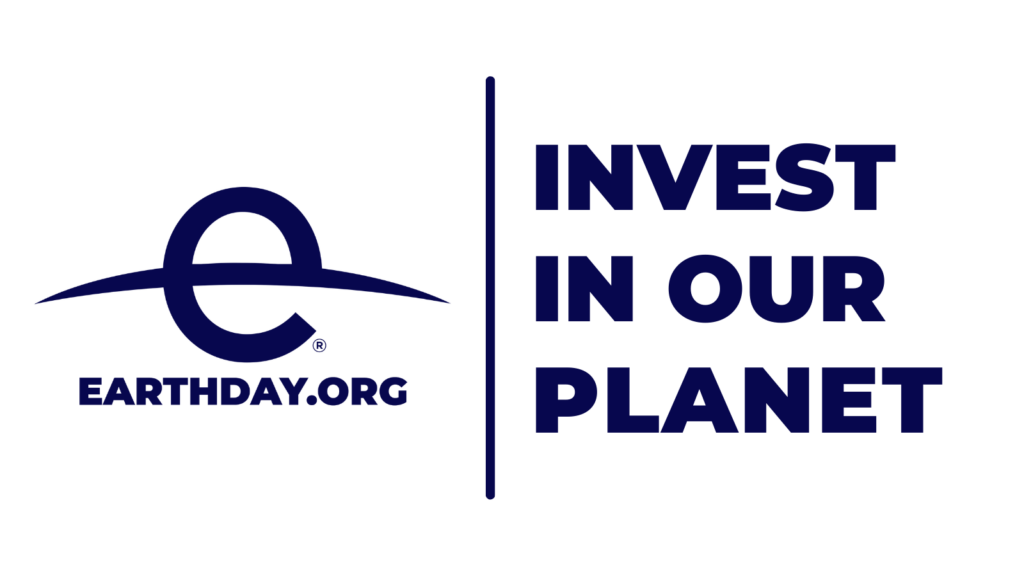
The World Is Dying
The world is becoming hotter as the years go by, a study done by Climate.gov has shown that this is a true statement “Earth’s temperature has risen by an average of 0.14° Fahrenheit (0.08° Celsius) per decade
since 1880, or about 2° F in total, The rate of warming since 1981 is more than twice as fast: 0.32° F (0.18° C) per decade.” The world is getting hotter, and it is getting hotter at a faster rate as the decades go on. You might be wondering what is causing this, well in an email interview with Howard Diamond, a Climate Science Program Manager at NOAA’s Air Resources Laboratory he was able to provide a few answers for us, “Nearly 200 years of research that has built up that has looked at many things that might be the cause

of climate change, but all the scientific evidence points unequivocally to greenhouse gasses, primarily carbon dioxide (CO2) as the primary forcing agent or driving force behind rising global temperatures”. Of course, this will have some other side effects besides just the world getting a little bit hotter. As the world is getting hotter, it is affecting the weather, people’s mental and physical health and it is causing the sea levels to rise among other things.
One of the things that climate change is affecting is the weather. Now while Diamond was hesitant to say that climate change is the main reason for all of the severe like weather that strikes the earth, he said that there is no doubt that climate change is having some kind of effect on it, “Well, while
no climate scientist necessarily blame every extreme event on climate change, there is no doubt that a
The global warming we are seeing now is quite a bit different from the cycles of ice ages and warmth that the earth has seen before
Howard Diamon
warmer planet is having effects on changing weather patterns and in producing more extreme events.”. However, he did also mention that not all natural disasters are confirmed to be having effects because of climate change, “From a science standpoint, and with respect to climate change and hurricanes, scientists have always urged caution and indicated that the jury is still out on that. Many papers and models indicate that we could see a lower frequency of storms yet stronger ones.”
With all of the storms happening on a greater scale, there is more likely chance for physical bodily harm, but what about other ways, well Mark Lynas, British author on multiple environmental books for public consumptions and co-founder of the pro-science environmental campaign network Replant had a few things to say about this, “You know, warming of climate change might include increased malaria transmission or increased pathogens in water supplies.” Lynas would also go on to say that this is a scenario based on how developed the country is and would only affect the less developed countries more.
So richer countries have more resilience to health problems that might be raised by climate change.
Mark Lynas
However, that is not to say that the more well developed countries wouldn’t feel some effects as well, the EPA did a study on this and reported their findings on their website at EPA.org, “The health effects of climate change include respiratory and heart diseases, pest-related diseases like Lyme disease and West Nile Virus, water- and food-related illnesses, and injuries and deaths. Climate change has been linked to increases in violent crime and overall poor mental health.” The findings would go on to talk about the three things that would make someone most vulnerable to the effects of climate change. Exposure being the first one, just talking about how long you are subjected to whatever change may be happening. The second one being sensitivity, which means older people and those with health conditions would be more likely affected than those without. Finally adaptive capacity, just people’s ability to adapt to their surroundings and manage them.
So, with all of that going on, what is the rest of the world going to look like if we do not stop our current ways? Well in short, it does not look particularly good. Diamond explains what the scientific community believes will happen if we do not change “some models expect that by the end of this Century that we could see an average annual temperature that is as much as 6ºC (10.8ºF) higher than the 20th Century long-term average”. However, Diamond did go on to say that this is an average value, so there will be locations that will feel it more than others, and in different ways, even to the point that some places are uninhabitable, “with averages that high, it is possible that large areas of the tropical and equatorial regions of the world may become inhabitable for people to live in”, he would also talk about how some places would become wetter, as precipitation is expected to increase, and other things, including places just disappearing all together, “sea levels will definitely be higher, and the coastal cities around the world could be in for some significant inundation, while some low-lying atoll island states in the Indian Ocean (e.g., Maldives) and Pacific (e.g., Kiribati) are in great danger of disappearing”.
Here was supposed to be another pull quote and paragraph talking about the rising sea levels and melting ice caps, I should be able to get this filled in soon, with the photo that I’m gonna get with the interviewee.
Of course, there are some ways that we can look to try and save the world and make the planet great again. End of Plastics Coordinator, Aidan Charron from earthday.org an organization that has partnered with multiple organizations to try and stop the destruction of the earth, talked about how to help, “ride your bike opposed to public transportation, anything you can do to reduce your global emissions footprint”
The only people that are going to be able to thrive on this planet and live are going to be extremely wealthy.
Aidan Charron
Charron also talked about making change is also going to take people standing up for what they believe in and getting to the people higher up and getting them to make a change, “Also you can start calling out bad actors, whether those bad actors or governments or there’s bad actors or corporations. Individual action is one of the most important ways to get involved and start mitigating the risk of climate change.” Charron also talked about how the organization that he works for, Earthday, and what they do to try and bring change, “So we are goanna be like to pressure governments, pressure corporations, and educate
people and give them toolkits on how they can be advocates for the environment. And then we are also trying to introduce climate education into curriculums worldwide.” Charron talked about how this was just one of the many goals of the organization, and how they are partnered with similar organizations that are also fighting to try and save the world, to learn more about them head to www.earthday.org/.


